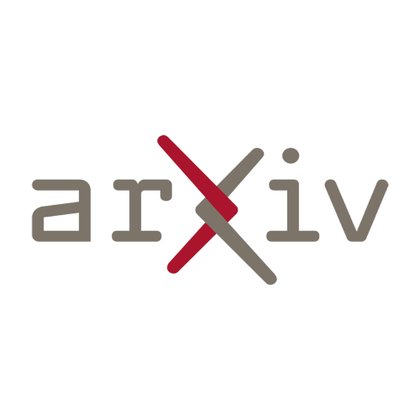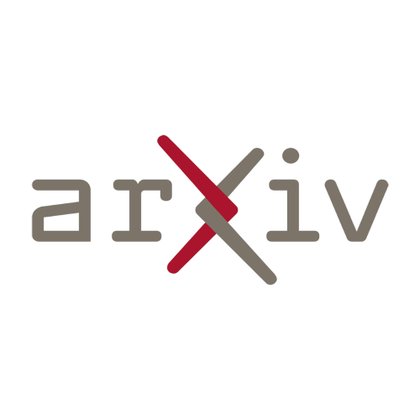
Suvir Mirchandani
@suvir_m
Followers
537
Following
411
Media
13
Statuses
43
PhD Student @StanfordAILab | Prev: Student Researcher @GoogleAI, AI Resident @MetaAI, BS/MS @Stanford CS
Joined August 2014
RT @Haoyu_Xiong_: Your bimanual manipulators might need a Robot Neck 🤖🦒. Introducing Vision in Action: Learning Active Perception from Huma….
0
87
0
So excited for @siddk to begin this new chapter! Working with Sidd has been a blast -- one of the most brilliant and kindest people I have had the privilege to learn from. Future PhD students, apply to work with Sidd!!.
Thrilled to share that I'll be starting as an Assistant Professor at Georgia Tech (@ICatGT / @GTrobotics / @mlatgt) in Fall 2026. My lab will tackle problems in robot learning, multimodal ML, and interaction. I'm recruiting PhD students this next cycle – please apply/reach out!
1
0
9
RT @jenngrannen: Meet ProVox: a proactive robot teammate that gets you 🤖❤️🔥. ProVox models your goals and expectations before a task start….
0
14
0
RT @oshaikh13: What if LLMs could learn your habits and preferences well enough (across any context!) to anticipate your needs?. In a new p….
0
92
0
RT @perryadong: Robotic models are advancing rapidly—but how do we scale their improvement? 🤖. We propose a recipe for batch online RL (tra….
0
15
0
Data quality can have a big impact on the performance of behavior cloning methods. But how can we measure the quality of demonstrations? One way is to score demonstrations via mutual information estimators:. Check out @JoeyHejna's thread 👇.
Behavior cloning. clones behaviors, so naturally data quality directly affects performance. However, there aren't great ways of measuring how "good" or "bad" different demonstrations are. Our recent work seeks to address this problem using estimators of mutual information. 🧵
0
1
11
Human video data can be easier to collect than robot demonstrations—but extracting actions for training robot policies is challenging. RAD uses language reasoning extracted from human videos to boost generalization in reasoning-based policies. Check out @jadenvclark's thread 👇.
How can we leverage human video data to train generalist robot policies? 🤖. Enter RAD: Reasoning through Action-Free Data, a new way to train robot policies using both robot and human video data via action reasoning.
0
0
5
RT @siddkaramcheti: Really grateful to @StanfordHAI for covering our work on Vocal Sandbox - a framework for building robots that can seam….
arxiv.org
We introduce Vocal Sandbox, a framework for enabling seamless human-robot collaboration in situated environments. Systems in our framework are characterized by their ability to adapt and...
0
6
0
This was a fun project to be a part of! Led by @jenngrannen and @siddkaramcheti (on the faculty job market!); w/ @percyliang and @DorsaSadigh. Paper: Website:
0
0
0
Introducing Vocal Sandbox 💬🤖: a framework for enabling human-robot collaboration by building up & adapting robot behaviors at different levels of abstraction via multiple teaching modalities. Check out @jenngrannen's thread below 👇.
Introducing 🆚Vocal Sandbox: a framework for building adaptable robot collaborators that learns new 🧠high-level behaviors and 🦾low-level skills from user feedback in real-time. ✅. Appearing today at @corl_conf as an Oral Presentation (Session 3, 11/6 5pm). 🧵(1/6)
1
0
5
This was a fun project with David Yuan (undergrad!), @kaylburns , Sazzad Islam (undergrad!), @tonyzzhao, @chelseabfinn, and @DorsaSadigh. ArXiv: Website: (5/5).
arxiv.org
In recent years, imitation learning from large-scale human demonstrations has emerged as a promising paradigm for training robot policies. However, the burden of collecting large quantities of...
0
2
4
But learning from mixed-quality crowdsourced data also presents challenges and opportunities for future work! We’ll be presenting more about RoboCrowd at the Workshop on Mastering Robot Manipulation in a World of Abundant Data @corl_conf on Saturday 11/9. (4/5)
1
2
9
We instantiate the framework in a system based on ALOHA (@tonyzzhao et al. 2023). We deployed the system for two weeks near a cafe on Stanford campus. Over 200 users voluntarily came up to the robot and interacted with it, giving us over 800 episodes (2/5)
1
0
3
Thanks to great collaborators: @suneel_belkhale , @JoeyHejna , Evelyn Choi (undergrad!), Sazzad Islam (undergrad!), and @DorsaSadigh. ArXiv: Website: (7/7).
arxiv.org
A long-standing goal in robot learning is to develop methods for robots to acquire new skills autonomously. While reinforcement learning (RL) comes with the promise of enabling autonomous data...
1
1
9
We’re presenting our “negative results” at @corl_conf -- stop by our poster in Session 4 (4:00-5:30pm) this Friday 11/8. (6/7)
1
0
2











